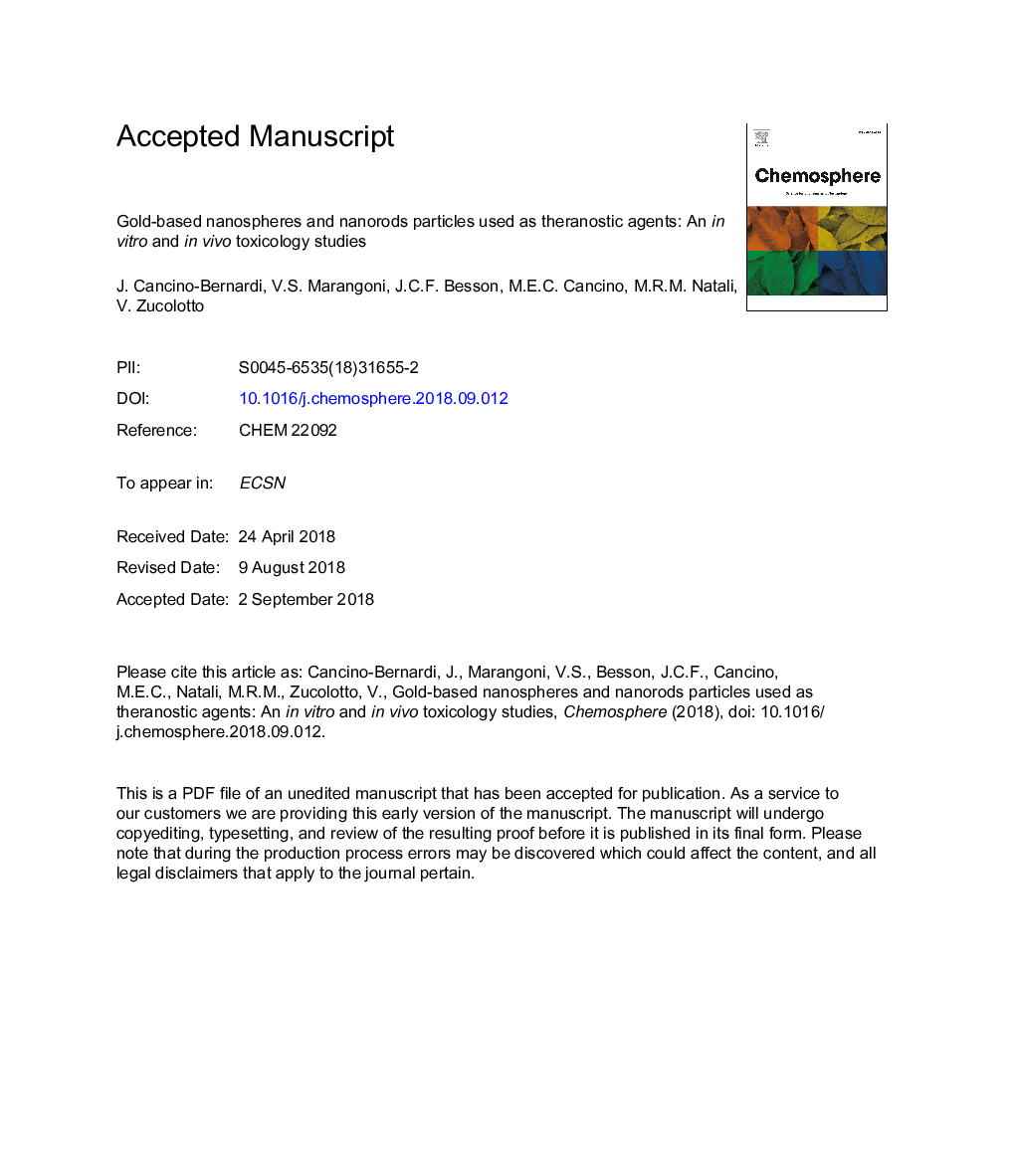| Article ID | Journal | Published Year | Pages | File Type |
|---|---|---|---|---|
| 10149482 | Chemosphere | 2018 | 31 Pages |
Abstract
The adverse effect of gold-based nanoparticles is still an open question since it depends on several factors as shape, surface charge or route of administration. In this study, we investigated the influence of shape and human serum albumin (HSA) coating on the adverse effects of spherical (AuNP) and nanorods (AuNR) gold-based particles. F C3H (fibroblast) and HTC (hepatocellular carcinoma) cell lines both from liver were exposed to 25, 75 and 125â¯Î¼gâ¯mLâ1, which correspond to 109 NP mLâ1. For in vivo studies, Wistar rats received these materials by oral administration in doses of 10â¯Î¼gâ¯kgâ1 or 40â¯Î¼gâ¯kgâ1. Systemic toxicity was verified after 24â¯h and 48â¯h by morphological analysis, blood parameters and myeloperoxidase enzyme activity. Our results revealed that HSA corona does not influence totally the pathway of interactions between AuNP and AuNR. In vitro results evidenced that AuNP can decrease in at least 50% viability of F C3H and cell adhesion of HTC, but corona significantly overcomes these effects. No differences between shape or corona were observed in function of cell lines. In vivo studies showed that 40â¯Î¼gâ¯kgâ1 of AuNP-HSA caused an enhancement of the myeloperoxidase response indicating inflammatory processes. An increase from 40% to 80% on alkaline phosphatase levels were found for all groups. Our findings suggested that gold-based particles coated or not with HSA do not cause expressive adverse effects on in vitro or in vivo systems, and their oral administration cannot cause a systemic effect in the experimental conditions used here.
Related Topics
Life Sciences
Environmental Science
Environmental Chemistry
Authors
J. Cancino-Bernardi, V.S. Marangoni, J.C.F. Besson, M.E.C. Cancino, M.R.M. Natali, V. Zucolotto,
